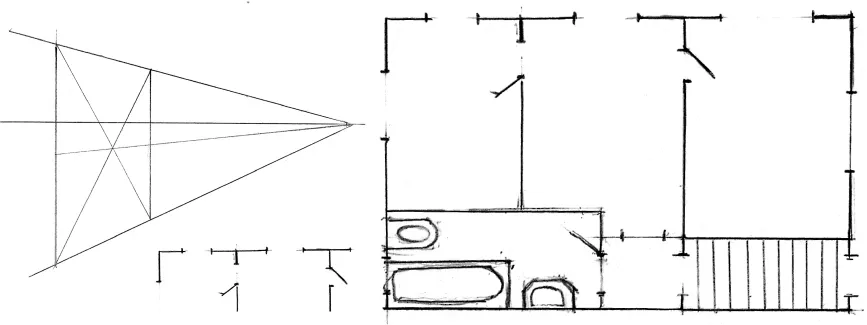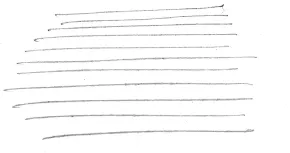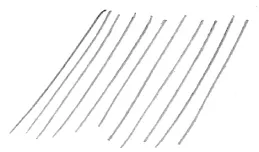
eBook - ePub
The Complete Book of Drawing Techniques
A Professional Guide For The Artist
Peter Stanyer
This is a test
Compartir libro
- English
- ePUB (apto para móviles)
- Disponible en iOS y Android
eBook - ePub
The Complete Book of Drawing Techniques
A Professional Guide For The Artist
Peter Stanyer
Detalles del libro
Vista previa del libro
Índice
Citas
Información del libro
The Complete Book of Drawing Techniques is intended for artists who are looking to expand their knowledge and understanding of materials and the wide range of available media. It will teach them about the characteristics of these media and materials and how to use them to get the required effect. With a unique combination of instruction and practice the book provides examples of the type of mark-making each medium produces. A range of projects then demonstrates effective ways of working with them. By the end of the book every budding artist will have enough knowledge and confidence to utilize the techniques they have learnt in a broad range of compositions of their own choosing.
Preguntas frecuentes
¿Cómo cancelo mi suscripción?
¿Cómo descargo los libros?
Por el momento, todos nuestros libros ePub adaptables a dispositivos móviles se pueden descargar a través de la aplicación. La mayor parte de nuestros PDF también se puede descargar y ya estamos trabajando para que el resto también sea descargable. Obtén más información aquí.
¿En qué se diferencian los planes de precios?
Ambos planes te permiten acceder por completo a la biblioteca y a todas las funciones de Perlego. Las únicas diferencias son el precio y el período de suscripción: con el plan anual ahorrarás en torno a un 30 % en comparación con 12 meses de un plan mensual.
¿Qué es Perlego?
Somos un servicio de suscripción de libros de texto en línea que te permite acceder a toda una biblioteca en línea por menos de lo que cuesta un libro al mes. Con más de un millón de libros sobre más de 1000 categorías, ¡tenemos todo lo que necesitas! Obtén más información aquí.
¿Perlego ofrece la función de texto a voz?
Busca el símbolo de lectura en voz alta en tu próximo libro para ver si puedes escucharlo. La herramienta de lectura en voz alta lee el texto en voz alta por ti, resaltando el texto a medida que se lee. Puedes pausarla, acelerarla y ralentizarla. Obtén más información aquí.
¿Es The Complete Book of Drawing Techniques un PDF/ePUB en línea?
Sí, puedes acceder a The Complete Book of Drawing Techniques de Peter Stanyer en formato PDF o ePUB, así como a otros libros populares de Kunst y Kunsttechniken. Tenemos más de un millón de libros disponibles en nuestro catálogo para que explores.
Información
Categoría
KunstCategoría
KunsttechnikenPart One
THE PENCIL
The different types of pencil, graphite, erasers.

INTRODUCTION
A pencil is a rod of graphite encased in a soft wood such as cedar, about six or seven inches long and exposed at one end. Crude forms of graphite pencils were first used as early as the 17th century. Before this, rods of lead or silver (known as silver point) were used as implements for making drawings. The modern form of lead or graphite pencil with its wooden encasement first came into use about the beginning of the 19th century.
The pencil fundamentally works by pushing or pulling the lead end across the surface fibres of the paper, which act as graters, breaking up into small flakes. Pressure on the pencil pushes the flakes of lead into the fibres of the paper to leave a mark or trace.
Graphite, a form of carbon, also known as mineral black or plumbago, is the major constituent of the modern pencil. The softness or hardness of a pencil varies depending on the amount of clay mixed with the carbon. The softest varieties of pencil contain little or no clay. Artists and designers will use a range of pencils, varying their choice according to the effect they are trying to achieve.
As the graphite is worn away by use, it can be repeatedly exposed. This is done by the action of sharpening the pencil using a purpose-made sharpener or blade. Sharpening and exposing the graphite should be regarded as an important act, because how it is done changes the type of mark you make with it. There are many ways of sharpening. A particular point produces a particular result. The artist should experiment to discover what is possible and how to make each type of pencil meet his particular needs at any given time.
The pencil can be used for a variety of purposes and, as with any material you use, you must be fully aware of its potentials and its limitations - different pencils and types are designed for particular uses. In the ensuing chapter some of these practices will be revealed with particular relevance to the appropriate pencil or graphite material.
The marks shown over the following few pages give some idea of the wide range of mark making possible. When you have looked at them, take each of the pencils in turn and see what marks you can make. Apart from being very stimulating and a way of opening your mind to new possibilities with your drawing, you will find it increases your ‘feel’ for the pencil itself. As artists, what we feel through the materials we use has an affect on what we produce, and familiarity with those materials is vital to a good outcome.
Materials and examples of marks

HARD PENCIL
Hard pencil marks have very little variation in the range of mark making. They only usually vary through a linear progression. Tone is usually made from a build up of crosshatch effects. Hard pencils are denoted by the letter H. As with soft pencils, they come in a range, comprising HB, H, 2H, 3H, 4H, 5H, 6H, 7H, 8H and 9H (the hardest).
These pencils are mainly for use by designers, architects and people who produce precise technical diagrammatic drawings for which a fine, accurate line is essential, such as perspective or other projection drawings. Although the marks made with hard pencil show very little variation it can be used in an expressive manner. As with soft pencil, tone can be built using a cross-hatching system, although the result is much finer and more formal, the cross-hatching emerging out of a series of linear progressions.
SYSTEMS FOR HARD PENCILS
Hard pencils are mostly appropriate for drawings requiring accuracy. As we have pointed out previously, such drawings are usually done by engineers, industrial designers, graphic designers and architects. The final drawings they produce have to be to scale and precise so that other people, such as craftsmen, can follow the instructions to construct or make the designed object. These drawings come in a number of different types of perspective, or parallel projection systems, ranging from flat orthographic plan or elevation drawings to 3D perspective illustrations.

HARD PENCIL MARKS
NB: I have not given you examples of mark making with HB or 7H to 9H pencils.





